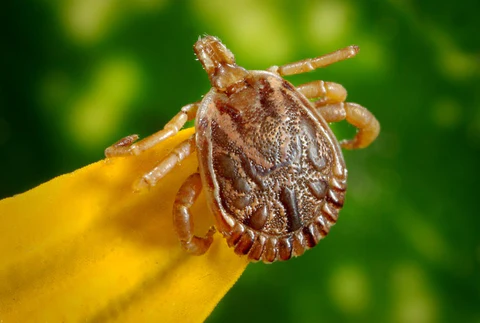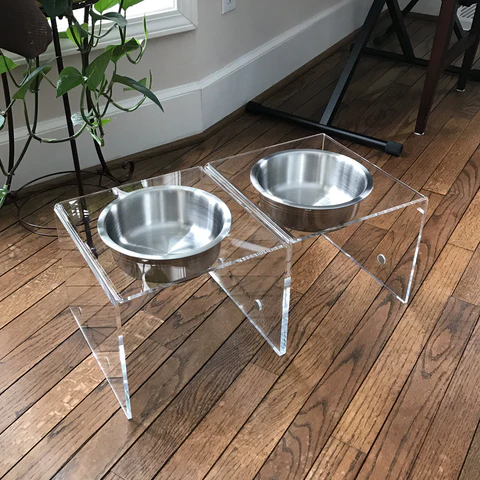Pet Insect Bites: The First Day of Spring Is Coming!
Posted by Alicia Compton on
The first day of spring is only 3 days away. Spring brings flowers, sunshine, and Spring Break! But, it also brings back those pesky little critters. You know the ones I’m talking about. There will be more bees, wasps, hornets, and other insects out. We aren’t the only ones who want to enjoy the beautiful sunshine.
Here in Georgia the weather hasn’t made up its mind on if it’s Winter or Spring. This morning I woke up to frost on the car windshield. But, by 11 this morning I had to turn on the air conditioner in the house. We’re getting the pleasure of experiencing two seasons in one day.
I don’t think the bees got the memo that it isn’t quite spring yet. We have a tree in our yard that is blooming the beautiful Southern magnolia. Also known as the Magnolia grandiflora. This tree seems to be a favorite among bees. For the past two weeks or so they’ve been pollinating the tree nonstop.
We all know, unfortunately, what the bee population in capable of though. For some of us, and even our pets, a sting from a bee may result in an allergic reaction. My granddaddy was one person who was allergic to bees. When they would sting him, it would result in a hospital stay. That didn’t stop him from working in the yard until his last day here on Earth.
But, as we all know, bees aren’t the only insects that like to leave their mark. A spider bite can leave you and your pets down and out. As well an an ant or flea bite.
So, what do you do when your pet gets an insect bite? Well, my #1 recommendation will always be to contact a veterinarian. Especially if you have a regular one that sees your pet. They know your pet’s history. So, they’ll know the best route to take as far as treatment goes.

But, are you still a little curious about identifying insect bites in pets? What about easing that “sting” that comes with the bites? Then read on!
Insects That Sting and Insects That Bite
According to the Emergency Medical Services Authority website venomous insects sting. While insects considered non-venomous bite.
A sting is due to a venomous insect inserting their stinger. That’s when they release a toxin. A toxin that is quite painful.
On the other hand, during a bite an anti-coagulant is being inserted. Allowing the pest to enjoy your blood as, well, dinner.
Venomous Insects That Sting
- Fire Ants
- Bees
- Wasps
- Hornets
- Yellow Jackets
Non-Venomous Insects That Bite
- Fleas
- Ticks
- Bed Bugs
- Mosquitos
- Fleas
- Lice
- Chiggers
- Scabies
A sting can result in a serious allergic reaction. But, with a bite there is the possibility of many diseases.
Diseases That Are Possible Due To An Insect Bite
- Malaria
- Encephalitis
- Lyme Disease
- Rocky Mountain Spotted Fever
The possible results of a bite or sting can be deadly. Even in a pet that seems healthy. That’s why it’s so important to visit a veterinarian in the event of your pet being “targeted”.

Identifying The Bite or Sting Culprit
I always seem to find these odd little bumps on my dogs. Most of the time I don’t worry about them. Mainly because they don’t seem to be a bother. But, even after tons of Google searches I still can’t find the “culprit” of the bumps.
So, when it comes to your pet - how do you identify the culprit? PetMD offers a great slideshow on their website. It’s a great visual guide for those bites pestering your pet.
7 Common Bug Bites on Dogs and Cats
The most common insects listed are fleas, ticks, flies, ants, mites, mosquitoes, bees, wasps, and hornets.
Flea Bite Identification
Working in a veterinary office, I heard it often. A client comes in and says their pet is itchy everywhere. But, they treat them for fleas every month. They never see fleas on them. So, of course, there is no way they have them!
Wondering what the end result usually was? The itchy skin culprit was fleas. With the most common sign of fleas being, well, flea poop. Flea poop is easily mistaken for dirt. Because, that’s exactly what it looks like -- tiny specks of black or brown dirt.
Even just one bite can send a pet who is allergic to their knees. According to PetMD there’s different characteristics a flea bite may exhibit.
Flea Bite Characteristics
- Rash
- Swelling
- Redness
- Crusting
- Oozing
- Hair loss
It seems as if fleas have favorite “meeting spots” on our pets, too. These areas include the groin, head, neck, tail base, and near the anus.
Tick Bite Identification
PetWave offers a great article on identifying tick bites. Even noting that most of the time the tick becomes “full” after feeding on your pet. So, you’ll be able to see the tick without a problem.
The symptoms of a flea bite are close to those of a tick bite. Including swelling and redness at the bite site. But, most of the time you won’t see the crusting and oozing until the tick has fallen off or is removed.
Tick bites can end up being very serious for you and your pets. Ticks carry a lot of diseases. Diseases that can end in a deadly result. Some of these diseases include: tick paralysis, Lyme disease, ehrlichiosis, encephalitis, and Rocky Mountain spotted fever.
Mosquito Bite Identification
I’ll admit that a mosquito bite is my personal worst enemy. They make my skin so itchy. As well as always seem to leave a scar on me. Mosquitoes can do the same to your pet. Causing hours upon hours of scratching. Which begins right after the bite occurs.
Mosquitoes don’t discriminate either. When it comes to using your pet as a meal, they’ll bite anywhere.
Just like fleas and ticks, you’ll see the redness and swelling after a mosquito bite. As well as possibly a side of hives.
Ant Sting Identification
Ant stings are often seen on pets who spend a lot of time outside. The bites are usually on the feet and the stomach area.
The bites will cause your pet to be itchy. You may also notice some redness near the sting site. Some pets may even experience some lameness according to PetMD.
Fly Bite Identification
A fly bite falls closely into the category of flea bites. They are often painful and cause redness and swelling.
Mite Bite Identification
I’m sure you’ve heard of scabies. Scabies are caused by mites. They are microscopic, so you can’t see them with the naked eye. Scabies is also one of those scary things that your pet can give to you or vice versa.
The pests actually chew their way through your pet’s skin. This can open up your pet to bacteria and yeast infections. Both are not pleasant. They often don’t smell good either.
You can find a mite infestation anywhere on your pets body. But, there are a lot of common places you may find them.
Common Body Parts of Your Pet You May Find Mites
- Elbows
- Armpits
- Groin
- Ears
As you can see, mites have a wide range of “territory”. On top of their abundant territory, they also don’t discriminate on symptoms.
Mite Bite Characteristics
- Swelling and Redness
- Hair loss
- Crusting
- Oozing
- Secondary Lesions
Bee, Hornet, & Wasp Sting Identification
All insect stings and bites may end up serious. But, these three insects cause the highest chance of risk in your pets. The sting is so painful your pet will more than likely start whining as soon as they are stung.
These creatures are also creatures that don’t discriminate. They will sting anywhere. The most common place being the mouth, or muzzle, area of pets. Usually caused by a curious pet.
Bee, Hornet, & Wasp Sting Characteristics
- Whining
- Lameness
- Itching
- Hives
- Redness and Swelling
- Hives
- Vomiting
- Diarrhea
- Stumbling and/or Collapsing
- Low Blood Pressure
Pet Insect Bite and Sting Treatment Options
As I stated above, you should always contact a veterinarian if your pet gets an insect bite or sting. A simple bite can turn deadly within a matter of minutes. It is always better safe than sorry.
The Pet Education website recommends removing the stinger if your pet is stung by a wasp, hornet, or bee. If you’re not comfortable doing this, this is something a veterinarian can do.
Before getting to your veterinarian you can also relieve some of the itchiness at home. You can do this by applying a baking soda and water paste onto the sting site. A cold compress will help with swelling and pain.
Your veterinarian may offer many treatment options. Especially if it is a severe case. These treatment options may include Corticosteroids, antihistamines, and IV fluids. They may also recommend blood work to make sure the sting isn’t damaging any organs.
Flea and Tick Treatment Options
If your pet has a severe allergy to fleas the veterinarian may need to treat him with medication. You may also have to give your pet a medicated bath to help ease the discomfort.
To ease the “itch” at home The Nest actually recommends bathing your pet in an apple cider vinegar solution. Which is another solution the veterinarian I worked for offered many times.

In order to treat a tick bite you’re going to want to make sure the whole tick is removed. You can remove a tick at home. Make sure you wash your hands before and after. You should also wear disposable gloves while removing the tick.
If you’re not comfortable removing a tick any veterinarian can do this. Some groomers offer this service, too. Make sure the area is cleaned well after it is removed. If you notice any signs of redness and swelling you should call your veterinarian right away.
Fly Bite Treatment Options
Fly bites can turn into lesions fast. These will need to be cleaned daily. Your veterinarian will more than likely want to prescribe an ointment for you to apply. This will help ease the discomfort. It will also help heal the bites.
Ant Sting Treatment Options
I know personally how horrible an ant sting can be. You can help ease the “sting” by bathing your pet in an oatmeal bath. As well as applying a baking soda and water paste to calm the discomfort.
Protecting Pets From Insect Bites and Stings
Unfortunately, if an allergic reaction is going to happen it only takes one bite or sting. Keeping your pets away from all insects probably isn’t possible. But, doing your best to protect them is.
Flea and Tick Prevention
There are so many products out there right now that are great for flea and tick prevention. The most important thing is to follow the directions. If it is a monthly treatment, it must be done monthly. Consistency is key in keeping the fleas and ticks away.
The biggest misconception about flea and tick preventatives is that if you still see fleas the product isn’t working. This isn’t always the case.
If the treatment isn’t applied correctly, it won’t work as well. If the treatment isn’t applied as recommended, it won’t work as well.
This is especially true for treatments put directly on the skin. A lot of people will bathe their pets right before or right after applying topical flea and tick treatments. In most cases the manufacturer of the products will recommend not bathing your pet for 48 hour or so. This is 48 hours before and 48 hours after the treatment.
Also, technically these preventatives don’t keep the fleas and ticks off of your pets. It just kills them when they bite your pet.
That’s why ridding where your pet will be from fleas is a top priority. All of their bedding, toys, bowls, blankets, etc. should be washed. Floors should be vacuumed and mopped. Carpet areas should be shampooed. As well as furniture. Fleas will hide anywhere.
The same goes for your yard. Because, if the fleas are in your yard they may be traveling inside. I’d honestly recommend contacting a pest control company to rid your yard of any fleas.
Fly Bite Prevention
To stop pesky flies in their tracks PetMD recommends making sure your pet is clean and healthy. Flies are often drawn to areas that are dirty.
Are flies just drawn to one part of your pet’s body? There are a couple ingredients you can apply to those areas to stop the flies from biting.
Ingredients to Stop Flies From Biting Your Pet
- Petroleum Jelly
- Apple Cider Vinegar and Water
- Lemon and Water

Insect Sting Prevention
The easiest way to keep your pet from being stung is limitations. Plus, you’ll need to have a watchful eye. Keep your pet from areas where bees, hornets, and wasps like to pollinate. Such as flower beds, tree trunks, etc..
If ant stings are the problem, get rid of the ant problem areas in your yard. These are probably present in those beautiful ant beds that ants build.
Also, if you’re feeding your pet outside make sure ants can’t get to the food. Food is a huge attractant to ants.
Preventing Ants Access to Pet Food
- Make sure all bowls are cleaned on a daily basis. It is best if you can bring the bowls inside when they are not in use.
- Keep all food in a container that is vacuum sealed tight.
- Get a moat container and fill it with water. Then place the food bowls in the container. If the ants try to get to the food they will drown.
- Invest in a raised feeder. Ants can climb. So, a raised feeder won’t necessarily deter them from trying. But, they aren’t as tempting as bowls left on the ground.
The PetFusion Raised SinglePod Magnetic Pet Feeder would be a great option for a quick feed outside. It has great features. It’s also extremely portable.
Now that Spring has almost sprung I hope you're prepared for this upcoming season. Maybe now you’ll be able to enjoy the sunshine. You know, without all the pesky insect friends that like to visit.
Insects aren’t the only creatures that come out during the Spring. We’ll also have visitors like snakes. I can’t wait to touch on this topic Tuesday. Make sure you check back then to learn how you can keep your pets safe from other creatures this upcoming Spring.
Share this post
- Tags: Dog bowls, Pet Feeding, Pet Safety, Pet Wellness









